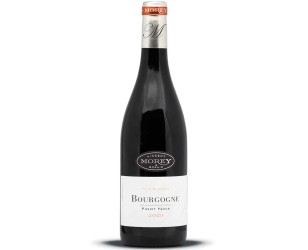appellation
Bourgogne
Wine Characteristics
Red wine : A wine grown in so many different villages obviously has a host of different ways of seducing the senses, yet these wines nevertheless share many common traits.
To the eye, they are richly coloured - crimson at first then, with age, shading towards dark ruby. To the nose they offer at first a basket of small red and black fruits (strawberry, cherry, blackcurrant, bilberry) later evolving into cooked prune, peppery notes, and notes of animal, underbrush, moss and mushroom. They are lively and structured in the mouth with a well-rounded and supple backbone. Tannins and fruit go hand in hand and the chewiness matches the power of the secondary aromas. This wine has volume and flesh- it is, in a word, vinous.
White wine : Light golden colour, limpid and crystalline, often with greenish highlights.
In the Yonne, Bourgogne blanc often develops aromas of gunflint or field mushroom. In the Côte-d’Or it is hazelnut with a hint of honey, butter, bracken, spices and sugared chestnuts. In the Saône-et-Loire notes of white flowers (hawthorn, acacia) and flint abound. On the palate it is aromatic, delicate but not over-light, full without being heavy, unctuous and firm, dry and caressing, well-rounded and quite deep, not overly structured yet persistent.
Wine Steward’s Tip
Red wine : The Bourgognes rouges have an elegant and refined character as well as a light and fluid structure in the mouth. They therefore go with rather delicate dishes that are to some degree aromatic - vegetable salads, meat or poultry tarts, or simmered beef and vegetables (pot-au-feu). Moreover, their delicacy makes them a perfect choice for those who like red wine with fish. Their natural elegance predisposes them towards veal, cold tabouleh, or hard cheeses like Gouda.
Serving temperature: 12 to 14°C for young wines, 14 to 16°C for older wines.
White wine : In the mouth, Bourgogne blanc has the knack of making allies of opposites and this adaptability makes it indispensable when planning meals. Its sprightliness makes it a delicate and tasty pre-dinner drink while its wideranging and persistent aromatic spectrum (thanks to the Chardonnay grape) makes it a team player in the kitchen, especially with fish and shellfish. Its native power enables it to prevail over onion tarts as well as over a wide variety of soft and hard cheeses such as Brie, Vacherin, Saint-Nectaire, Mont-d’Or, Beaufort, Comté and all varieties of Gruyère.
Serving temperature: 11 to 13°C.
Situation
Bourgogne rouge comes from the Pinot Noir grape whose name can be traced back as far as 1375 and which gives birth to all the great red wines of Bourgogne. It is delicate, highly valued and needs careful looking after during the growing season. The appellation Bourgogne rouge dates from 1937 and is grown in 299 communes throughout wine-growing Bourgogne.
It evokes images of plenitude and makes a fine starting point for further explorations into the world of red wines.
Bourgogne blanc is a success story. It brings out the best of the Chardonnay grape, now grown everywhere but whose native home is Bourgogne and which finds here its most sublime expression (Montrachet, Meursault, Chablis, Corton-Charlemagne, Pouilly-Fuissé...). The Bourgogne AOC, authorised in 1937, extends to the three departments of Yonne, Côte-d’Or and Saône-et-Loire.
This entry-level wine opens the way to the appellations Villages, Premiers Crus and Grands Crus. Though the raw material is the same in all cases, the Chardonnay grape creates a diverse spectrum of sensations which vary according to its provenance, the age of the vines and the particular vintage.
Terroirs
Red wine : In many cases the regional red Bourgogne grow and flourish near more prestigious AOC. These close neighbours are separated by only hundreds or sometimes even as little as tens of metres. The vineyards tend to be located along the foot of the wine-growing slopes on limestone soils mixed with some clays and marls. The soils are stony, rocky even, and quick-draining.
White wine : This wine is mostly grown on sites at the foot of the slopes but the nature of the soil varies according to each geographical situation. In the Côte-d’Or the soils are whitish or light grey marls and marly limestones, deep and not especially stony. The Yonne, in contrast, offers sloping calcareous sites, sometimes chalky as in the Tonnerrois district or on Kimmeridgian limestone as in Chablis and the Auxerrois, while in the Côte Chalonnaise and Mâconnais the broken landscape begets soils composed of limestone, clay and marl, plus, in the southern Saône-et-Loire, a granitic component.
Appellations Régionales, explained by Jean-Pierre Renard
Source : https://www.bourgogne-wines.com




